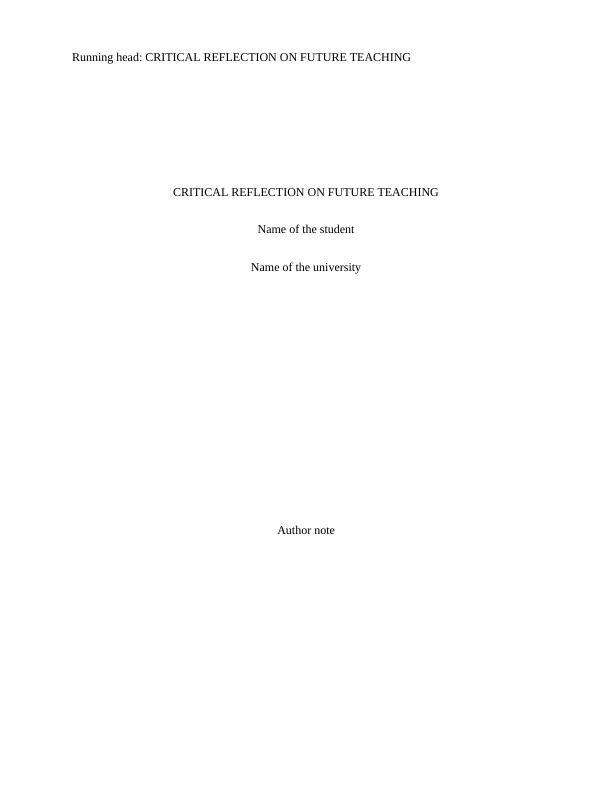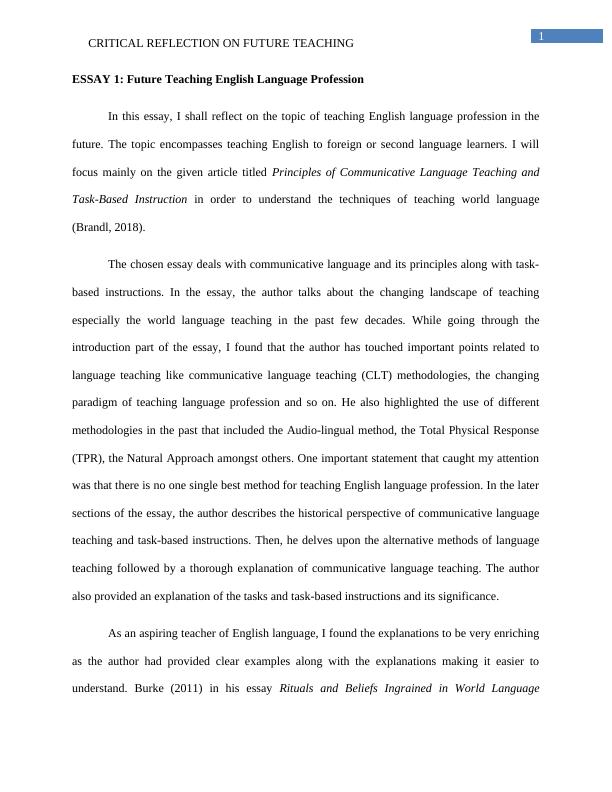Critical Reflection on Future Teaching
This document provides guidance on short-term programming and lesson planning with the Australian Curriculum: Languages, including curriculum design, program planning, and lesson planning.
6 Pages1348 Words218 Views
Added on 2023-06-09
About This Document
This essay reflects on the topic of teaching English language profession in the future and program planning essential for teaching English to students. It provides insights on communicative language teaching (CLT) methodologies, task-based instructions, curriculum design, and planning and programming methods. The essay also highlights the importance of having prior knowledge of the Australian Curriculum for teaching English. The critical reflection has helped the author in understanding the important facets of teaching language profession to students in the future.
Critical Reflection on Future Teaching
This document provides guidance on short-term programming and lesson planning with the Australian Curriculum: Languages, including curriculum design, program planning, and lesson planning.
Added on 2023-06-09
ShareRelated Documents
End of preview
Want to access all the pages? Upload your documents or become a member.
Reflection on Effective Learning of English
|6
|1515
|25
Overview of Oral Communication - Introduction
|7
|1601
|42
English As First Language
|8
|1712
|116
Critical Report and Reflection of Micro Teaching Lessons
|25
|8328
|83
Critical Report and Reflection of Micro Teaching Lessons
|6
|1020
|57
Critical Evaluation of Micro Teaching Sessions
|11
|3704
|76



